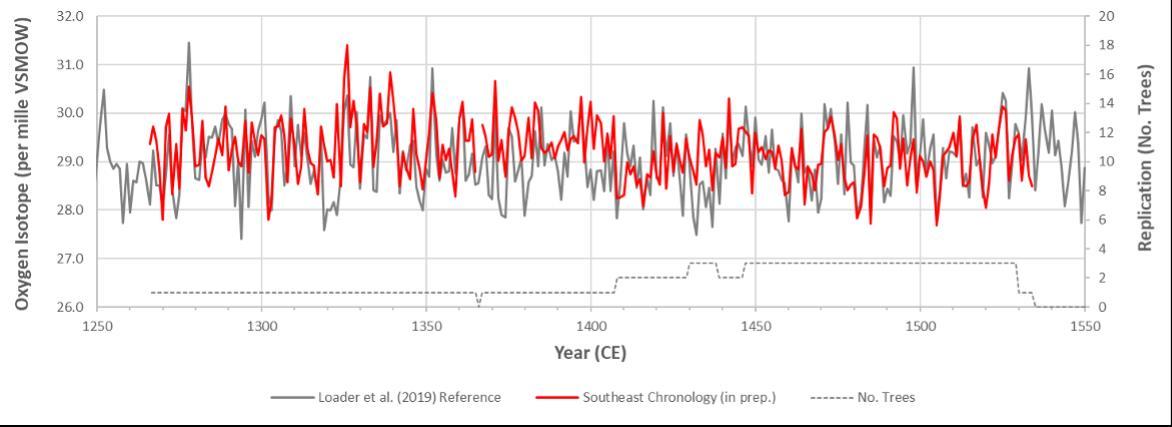
2 minute read
Dendroclimatology
In last year’s Annual Report, EOC announced the addition to the project of Prof. Neil Loader (Swansea) and his collaborators. The Swansea team joined us in April 2020 (with funding and contracts in place by August). This period coincided with the closure of Swansea and several British lockdowns due to the COVID-19 pandemic. While the pandemic limited their ability to conduct field sampling, to perform lab work, and to participate in UK-based HQP formation and outreach, they nevertheless have made progress towards the project objectives.
In 2020 – 2021, team members completed an audit of the tree-ring samples currently archived for the southeast of England, East and West Sussex, and Kent (Objective 3). So far, they have identified samples and prepared spanning from just before AD 1000 to the late 1780s, but with very low (if any) replication before AD 1200 and after AD 1600 (depicted above). Some selective coring of early and more recent historic buildings in the area will help to increase the replication at the extremities of the 1000-year chronology. The three centuries from 1200 – 1500 have almost 10-tree replication, and lab research will focus on this period for initial development of the climate reconstruction.
Advertisement
Some of the samples selected for analysis from dendro-dated sites have not been dendrochronologically-dated or have failed to date using ringwidth dendrochronology. These have also been prepared to test the use of the isotope chronology for dating undated material and as a source of additional replication. The team is currently preparing to cellulose for stable isotope analysis those samples from 1200 – 1600.
A further interesting development was the invitation to date the remains of a mediaeval chest located in the church at Mayfield. Two cores were collected, one was successfully dated by ringwidth dendrochronology, and a second shorter core failed to date. The chest front dates to circa 1300, although it is hoped that the dating of the second sample will help refine the estimated date. We will be measuring isotopes on both these core samples with the intention to include their data in our reconstruction. The chest also provides a fine example of carved oak for incorporation into the virtual reality elements of the project.
Finally, the team has received some samples from living trees from a local sawmill in Petworth West Sussex, harvested at the end of the 2020 growing season. These samples will help to strengthen the modern calibration / comparison with existing modern isotope series. In addition, EOC Partner, the BISC, has collected a series of increment cores from living trees on the Herstmonceux estate and has set-up five automatic dendrometers (treegrowth sensors) to provide data and datasets to students for projects in coming years. Ringwidth analysis of the living tree cores, and disc samples will commence shortly to determine the age of the oaks on the estate.










